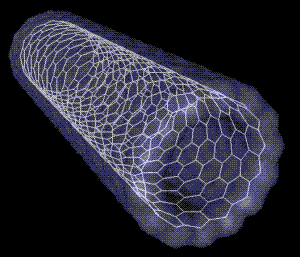Virginia Tech Professors Provide Incredible Insight into the Future of 3D Printable Materials via Reddit AMA
 There is little doubt that the single most important area within the 3D printing space is that of materials. Material science could potentially lead the way to thousands of new applications for additive manufacturing technology. It’s not the hardware that will drive things forward the most, but instead the materials that the hardware is able to work with.
There is little doubt that the single most important area within the 3D printing space is that of materials. Material science could potentially lead the way to thousands of new applications for additive manufacturing technology. It’s not the hardware that will drive things forward the most, but instead the materials that the hardware is able to work with.
When it comes to material science’s intersection with 3D printing, Virginia Tech is among the leaders in both research and development. Two men — Dr. Timothy Long, a Professor in the Department of Chemistry at VT and the Director of the Macromolecules & Interfaces Institute (MII), and Dr. Chris Williams, an Associate Professor in the Departments of Mechanical Engineering and Engineering Education at Virginia Tech, and the Associate Director of the MII — decided to present a Science AMA (Ask Me Anything) on Reddit yesterday.
The two men allowed the open community of Reddit to ask them questions regarding the future of 3D printing and the materials which may lead the way. They then came back hours later to respond to a good deal of these questions, with answers that may surprise you.
When asked about what’s being done to reduce the cost of materials within the space, Long gave quite an interesting reply. He felt that in order to really reduce pricing, we will need printers capable of getting away from materials which are pre-processed (i.e., filament and powders). What if we could just throw raw material into a printer and have it do its magic? The markup on materials such as filaments and powders is staggeringly high. For instance a typical 1kg spool of ABS filament will cost anywhere from $20 to $60, while the same quantity of ABS in granular form will cost around $3 in bulk.
One area which seems to finally be taking off is the 3D printing of electronics within an object as it’s being fabricated. We have recently seen the launch of the Voxel8 printer which does this for a price south of $10,000. Williams gave his thoughts on where this space is headed and just how things may shape up in the coming years ahead:
“In the 3D Printing community, we are most excited about being able to directly print conductive traces (circuits) into the parts as they are being fabricated. Thus, the circuit would be completely embedded into the printed part. Printing resistors, capacitors, etc is going to be a bit more challenging, but researchers are working towards this. The biggest question we will ask is ‘Do we have to print this, or can we just pick-and-place the component?’ I have a feeling that we will be embedding premade IC components into parts and then printing the interconnects.”
 Next, a Reddit user asked about the future of practical materials for household use. While Long replied stating that ABS plastic is currently the most common plastic used today, he also made it clear that he felt that in the future things will change. ABS is not exactly environmentally friendly, and actually can put off harmful fumes when melted. Long believes that safe, bio-based materials are the future of this industry, and eventually one will be able to print an object, and when done with it, recycle it and use it as feedstock for the next part they intend to print out. Williams added that eventually ceramics and metal materials will become the most practical for household uses. It’s just that the prices will need to drop considerably.
Next, a Reddit user asked about the future of practical materials for household use. While Long replied stating that ABS plastic is currently the most common plastic used today, he also made it clear that he felt that in the future things will change. ABS is not exactly environmentally friendly, and actually can put off harmful fumes when melted. Long believes that safe, bio-based materials are the future of this industry, and eventually one will be able to print an object, and when done with it, recycle it and use it as feedstock for the next part they intend to print out. Williams added that eventually ceramics and metal materials will become the most practical for household uses. It’s just that the prices will need to drop considerably.
This question was followed up immediately with one asking if it was possible to print using a combination of both metals and ceramics within one finished object. Williams remarked that there are several challenges to printing such a mixture of materials, as the sintering points of the materials vary greatly as do their rates of thermal expansion. The problem that researchers face is the difficulty of depositing a molten ceramic, with a very high melting point, onto a metal that has a lower melting point, without warping or melting the metal. It does appear that work is being done, however, to figure out a method for such a process.
“We are currently investigating techniques for fabricating ceramic metal composites by combining printing and metal casting,” explained Williams. “The PhD student working on this concept is finishing next month, so we’ll see how it goes. As for printing ceramics without firing: Some work has been attempted in this space by using high-powered energy sources (e.g., lasers found in EOS or ConceptLaser systems). However, this is tricky due to the amount of energy needed to directly sinter the ceramic powder in the bed. Since the kinetics of solid state sintering are so slow, the results thus far are really only focused on liquid phase sintering. Resultant parts are not (yet) fully dense.”
Next, a Redditor asked whether or not it was possible to print carbon nanotubes into a structure. Williams quickly jumped in and pointed to recent work being conducted in this area by UTEP, Virginia Tech. He also went on to explain that printing composites that include carbon nanotubes is not a problem; however, a problem does come about when trying to print aligned carbon nanotubes within a composite, or pure carbon nanotubes, which is impossible, at least right now. Dispensing the nanotubes so that they are aligned, and somehow getting them to bond together would be quite the challenge.
Lastly, when a Redditor asked about 3D printable food, Long quickly changed the topic to the rapidly improving area of 3D printing and large-scale construction.
“I think this is a proposal to the USDA! Printing food is not so futuristic, printing intricate chocolates and other edible goods are both happening,” stated Long. “The shape may
influence the taste. Now, printing a slice of pizza sounds fun, but the real future may be in printing the entire pizzeria building. The interface of construction and architecture and 3D printing is moving rapidly!”
Indeed it is. Just this weekend we reported n a Chinese company, WinSun, who had manged to 3D print an entire 6-story building in addition to a mansion.
I must say it was very interesting to read through the entire Reddit AMA and see just how optimistic these researchers were about the future of the materials space. There is no doubt that this space is experiencing rapid changes with research being conducted by some of the best minds on the planet. It will be very interesting to see just how much influence this research has over the entire 3D printing industry in the years ahead. Let’s hear your thoughts on these comments in the 3D Printing Material’s Science Reddit AMA forum thread on 3DPB.com.
Subscribe to Our Email Newsletter
Stay up-to-date on all the latest news from the 3D printing industry and receive information and offers from third party vendors.
You May Also Like
3D Printing Unpeeled: New Arkema Material for HP, Saddle and Macro MEMS
A new Arkema material for MJF is said to reduce costs per part by up to 25% and have an 85% reusability ratio. HP 3D HR PA 12 S has been...
3D Printing News Briefs, January 20, 2024: FDM, LPBF, Underwater 3D Printer, Racing, & More
We’re starting off with a process certification in today’s 3D Printing News Briefs, and then moving on to research about solute trapping, laser powder bed fusion, and then moving on...
3D Printing Webinar and Event Roundup: December 3, 2023
We’ve got plenty of events and webinars coming up for you this week! Quickparts is having a Manufacturing Roadshow, America Makes is holding a Member Town Hall, Stratafest makes two...
Formnext 2023 Day Three: Slam Dunk
I’m high—high on trade show. I’ve met numerous new faces and reconnected with old friends, creating an absolutely wonderful atmosphere. The excitement is palpable over several emerging developments. The high...

































